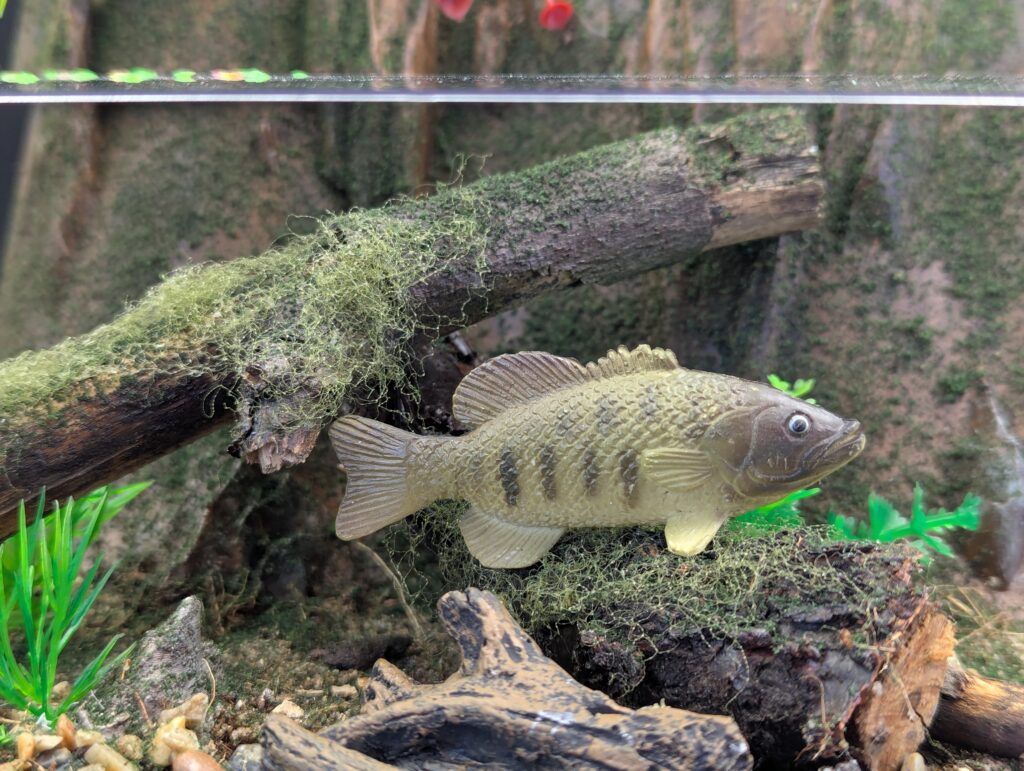
In August 2015 another wave of figures was released by Replica Toy Fish. Once again, no real announcement or launch, I think I found out because of a photo on the STS collector site or something. Maybe I found out about a different figure, and this one was there too. Seems like something that would be important for a company to make sales…anyway, it was just a few more species, but again, pretty popular models. There would be one more wave of available figures after this one, but we’ll get to those in time. For today, we’ll start with the last ‘bass’ from Replica Toy Fish, the Guadalupe bass, Micropterus treculii.
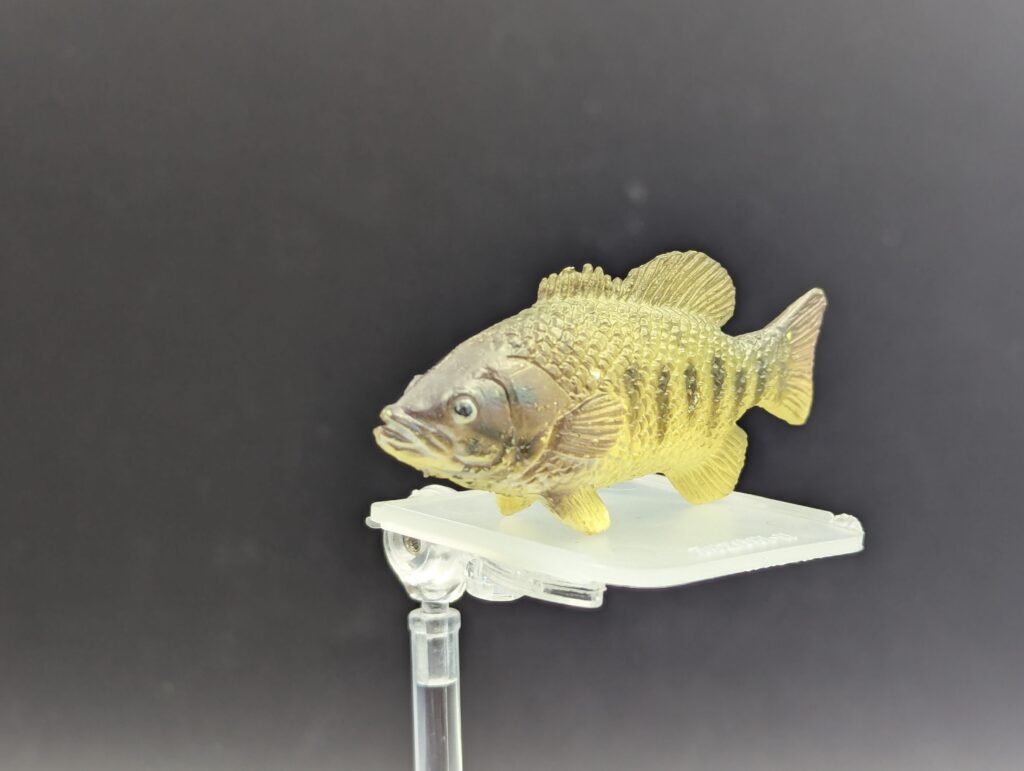
The Guadalupe bass is a largish sport fish similar to largemouth and smallmouth bass, this time one that is found only in streams in Texas (including the Guadalupe river). Their preferred habitat has lots of natural cover, and while they prefer flowing waters adults tend to prefer slower waters, while juveniles may be found in faster streams. As would be expected with large bass, adults tend to be piscivores, preying on smaller pan fish and bait fish, while younger fish are more insectivorous. Compared to other Micropterus species in the series, Guadalupe bass tend to be smaller, about 50cm (20 inches) in length. The IUCN lists the Guadalupe bass as Near Threatened, primarily due to hybridization with released smallmouth bass, although Texas Parks and Wildlife is apparently working to combat this with rearing and stocking programs.
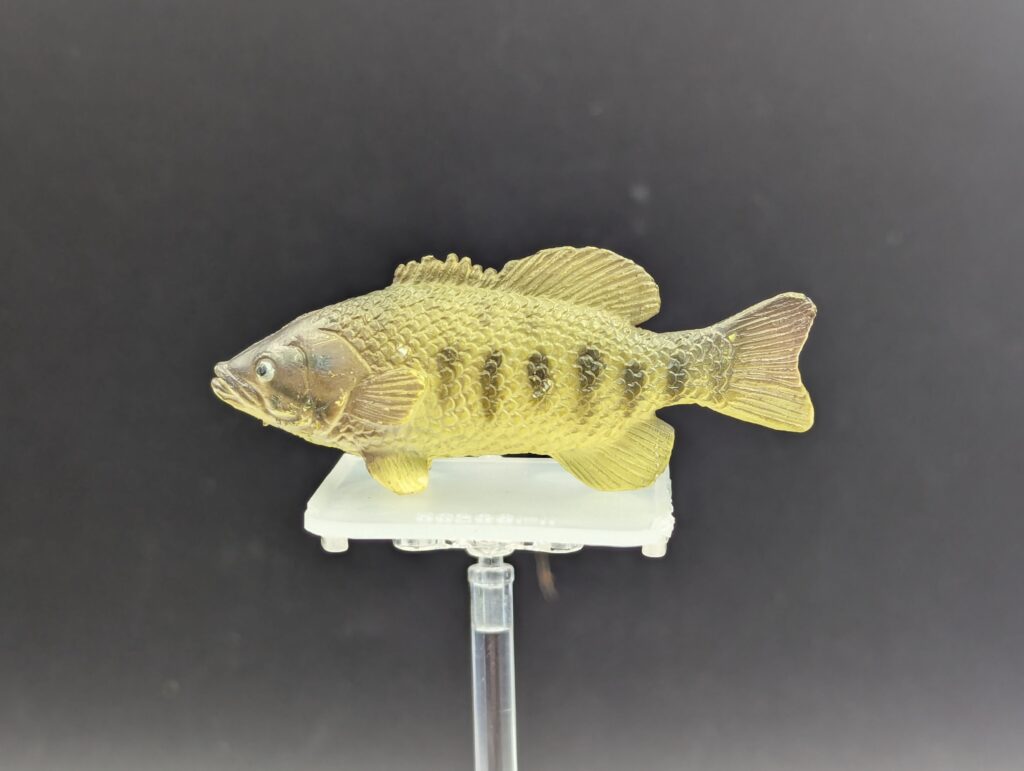
The figure itself is a typical bass shape, with the long football shape and expected large dorsal fin, divided between an anterior spiny-rayed fin and posterior soft-rayed fin. There appear to be 8 spiny rays, so this is in keeping with Guadalupe bass. The overall body is a little deeper than what we’d expect to see, but it is possible that the same sculpt was used for other, similar species (I believe an unreleased spotted bass Micropterus punctatus was planned, and at least one person has one seen here at TAI…they are a bit heavier set). The fins are, as usual, depicted in a manner that allows the fish to stand–the pectoral fins against the body, the rounded pelvic fins and anal fin extended outward. The tail is appropriately rounded, although the peduncle seems a little short relative to the body. The entire body is covered in rounded scales, except for the head, which is only etched with the lines if the opercula. The figure is about 7.4 cm (2.9 inches), giving a scale of about 1:7.
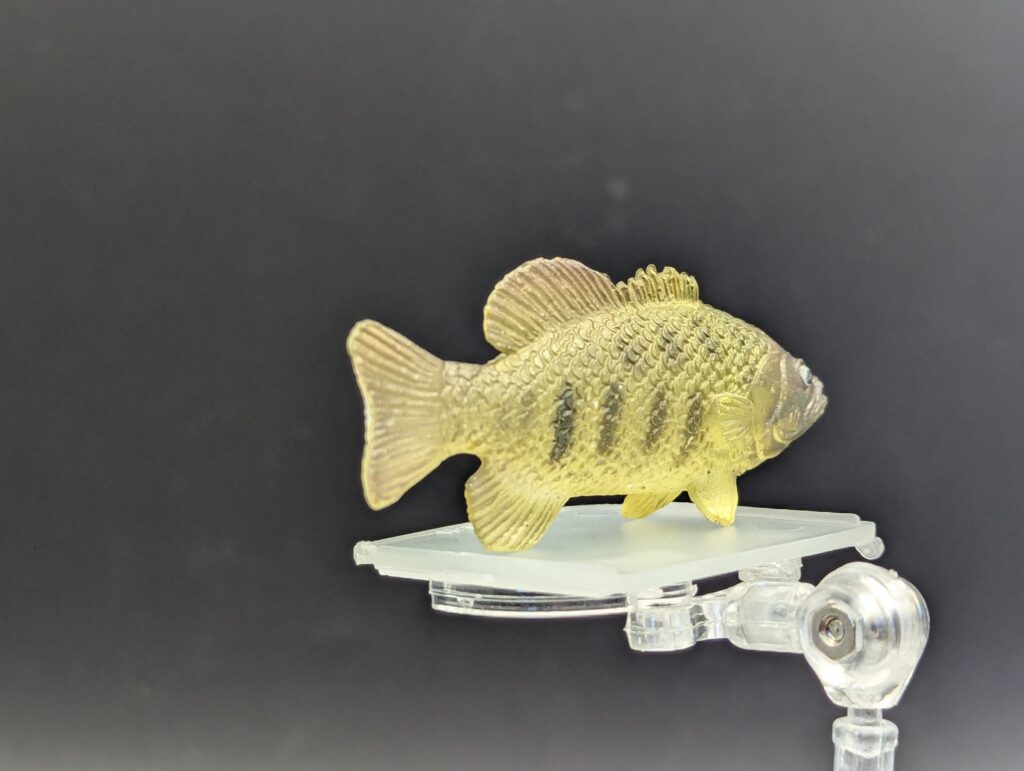
The base colour of the model is an olive green, which seems about right (as with most fish, it is variable). This colour fades from the back to white at the belly. The fins are painted over to match their surface, so the dorsal and pectoral fins, and tail, are painted in the same solid green and the anal and pelvic fins are lighter, with more of a wash over them to be white and green. The body is then banded with a darker olive; these bands are thick and distinct–and are different on both sides of the fish…One the right side, these bands are faint on the back, and then there are 7 bands that run from about midline to above the belly, from the pectoral fin to the peduncle. On the left, there are four distinct bands on the back, and four midline bars sit further down and appear to stop at the anal fin. In the right light, some faint blotches may indicate more bars. In the actual fish, we would expect to see a lighter base colour, with more random blotches along the back, with a dark stripe, possibly a line of spots, along the lateral line; this could interrupted by several thin bars along the sides. These would be less distinct, and numerous small spots would be present.
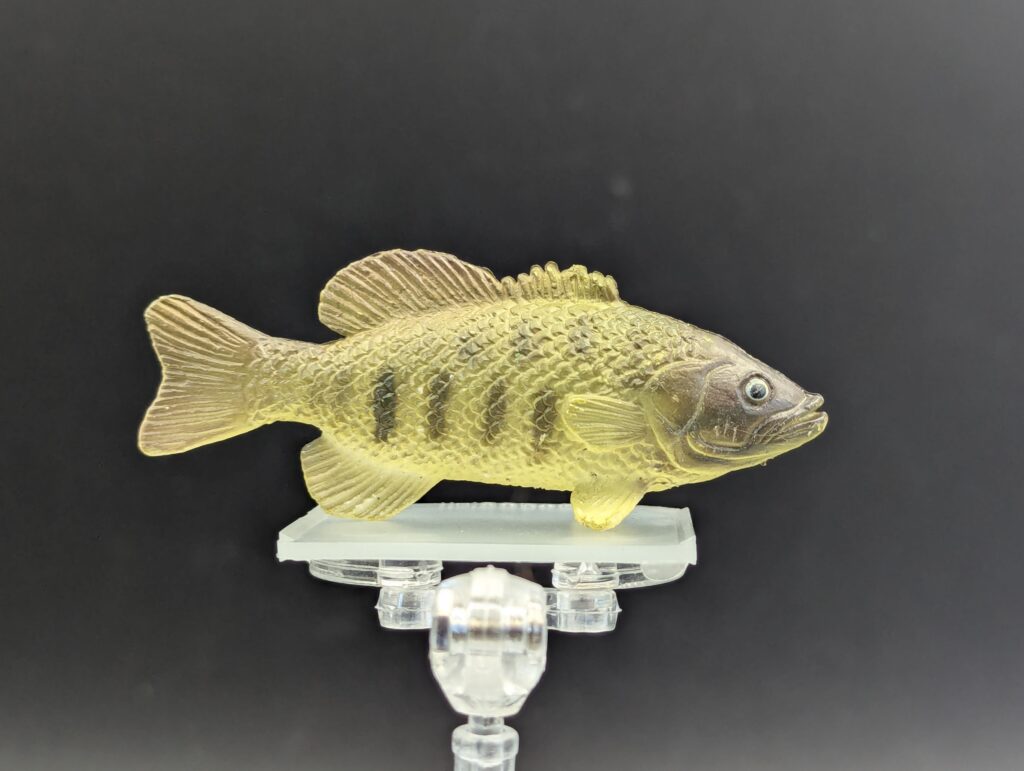
This would be a good time to note that paint application for Replica Toy Fish could be variable in its consistency and quality; even from one side of the fish to the other. I don’t know much about production, but especially in the later runs, each model could look different, and the paint could be crisp or sloppy. In the case of the model I’m looking at, there is a paint speck missing, possibly a production or storage issue (it’s always looked like that) but it varies. This does not even bring up that yes, to look at the figure, a Guadalupe bass may not be the first species that comes to mind, and especially in these later figures, it sometimes seemed like the original care was not there, like in the originals. Possibly, whoever was painting them was not familiar enough to be sure on their references.
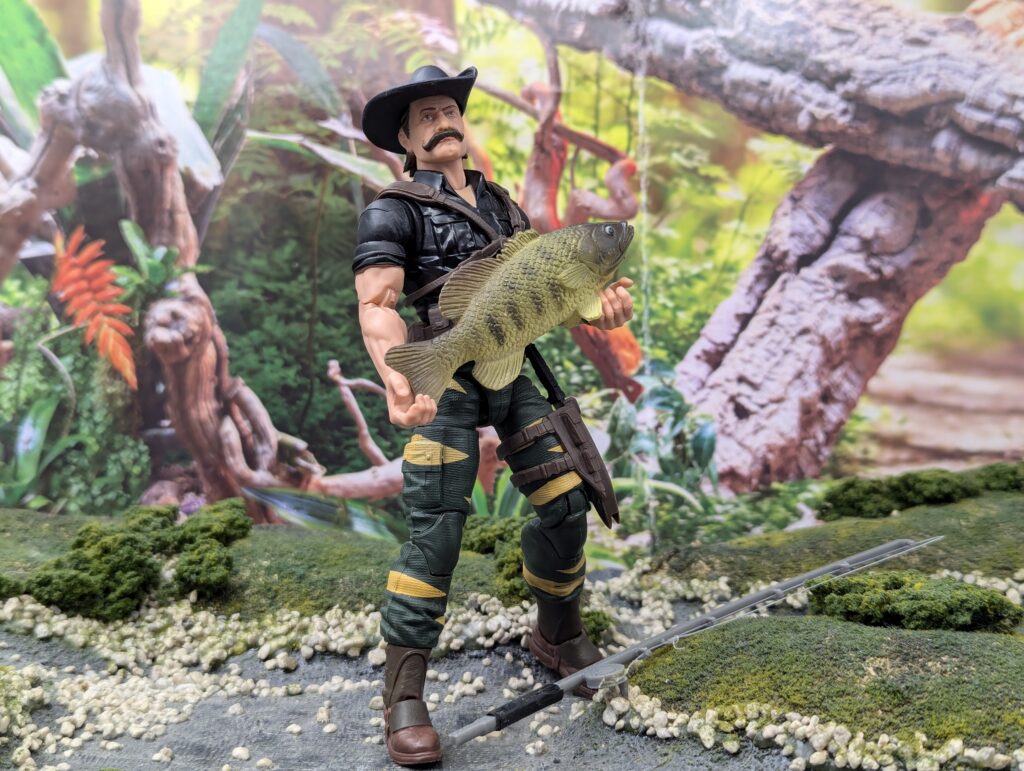
As far as the species goes, this is of course the first and only representative of the species. I will reiterate, I honestly don’t know how the species that were made were picked; as far as species go, Guadalupe bass seem a little esoteric, and also a bit ‘samey’ given that smallmouth and largemouth bass were already present (there was likely a plan for a set of ‘bass’) and there were several other planned fish that probably would have grabbed more attention. It’s nice enough although not all that distinct from the various largemouth bass figures–this one is certainly more of a ‘collector’s model’ since I don’t imagine the average fish-loving kid is clamoring for the species…but who knows. I’ll be looking at some other August released fish in the near future!
Disclaimer: links to Ebay and Amazon on the AnimalToyBlog are affiliate links, so we make a small commission if you use them. Thanks for supporting us!



